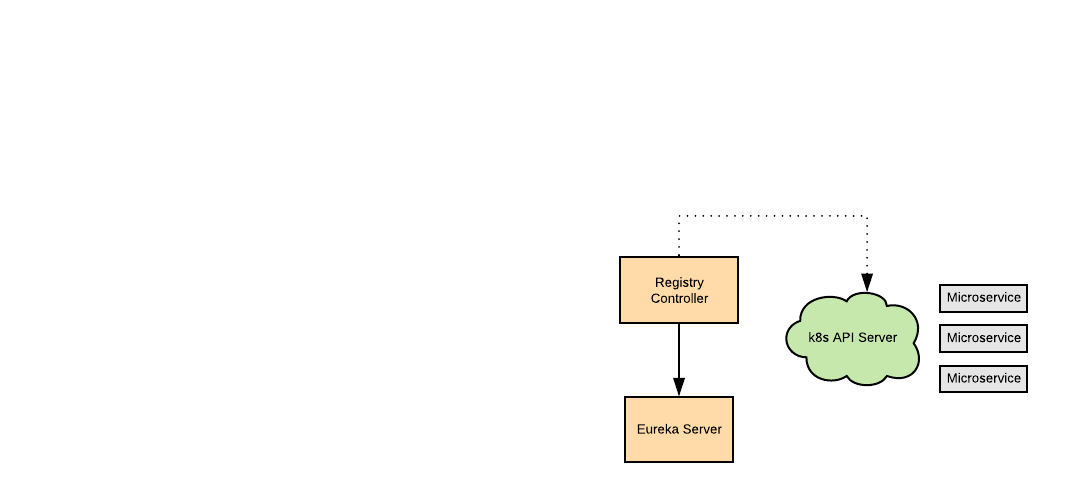Spring Cloud Service Registry Controller
A Kubernetes controller implementation using Fabric8 Java-Client as a proxy to register kubernetes services' endpoints with a Eureka Server.
A service needs to be labeled with cloud.spring.io/enabled: "true" to be picked
up and with cloud.spring.io/register: "true" to enable it to register.
Installation
### install the controller and a Eureka server
$ kubectl create -f ./deploy/manifest_kubernetes.yaml
### To access the Eureka server check the exposed services IP:port in your cluster
$ kubectl get services
### create the provided sample service and note that it's registered with Eureka
$ kubectl create -f ./example/examle.yamlTrying it locally using Minikube
If you are running a local Minikube
- to use RBAC start Minikube with
--extra-config=apiserver.authorization_mode=RBACoption - you would need to change the Eureka service in the manifest to be of "NodePort" type (and the example also).
- after installation, to find out a service URL in Minikube use
minikube service eureka-server --url
Trying it in Google Cloud Platform
Provided you have a GCP account, gcloud cli installed, and authenticated (using: gcloud auth login).
### create a cluster
$ gcloud container clusters create mycluster --cluster-version=latest --zone us-central1-a
### set gcloud config with default cluster
$ gcloud config set container/cluster mycluster
### get k8s credentials
$ gcloud container clusters get-credentials mycluster --zone us-central1-a
### Check you can access the cluster
$ kubectl cluster-info
### install the registry proxy controller and a eureka server
$ kubectl create -f ./deploy/manifest_kubernetes.yaml
### note the external IP of the eureka server
$ kubectl get services
### run the example and check if the service is registered with eureka
$ kubectl create -f ./example/examle.yaml
### clean up
$ gcloud container clusters delete mycluster --zone us-central1-a
Demo
A demo in this repo has two services, a backend-service and a frontend-service.
The backend-service is to be deployed as a kubernetes internal service, and the front-service is to be deployed as an exposed kubernetes service.
The backend-service is enabled (in the manifest) to register with the deployed Eureka server, and the frontend-service uses a client-side loadbalancer to call a backend-service instance discovered from the Eureka server.
